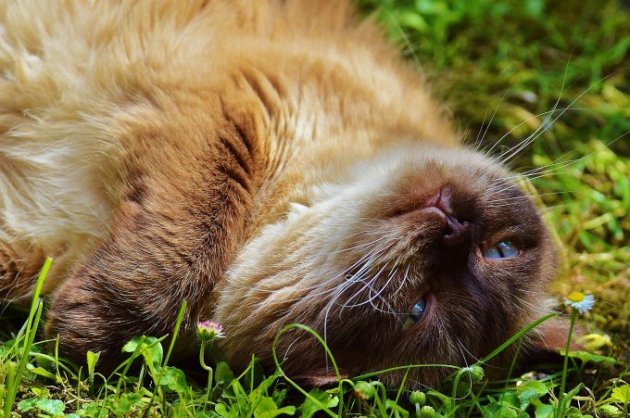Abdominal ascites in cats - face it!

Thursday, 25 April 2024

We can talk about ascites when too much liquid accumulates in the abdominal cavity. The organism is not able to absorb them, which leads to serious consequences. The condition may spread to other organs and cause a number of dangerous ailments.
Ascites is not a disease in itself, but it is a symptom of many serious ailments. It often appears in cats in the case of heart, kidney and liver disease. It is a characteristic feature of circulatory insufficiency and pancreatic damage.
Ascites appears through etiological factors. In case of circulatory failure, the right ventricle of the heart becomes overloaded. There is an increase in blood pressure throughout the body, which collects in the sinusoids of the liver. When circulatory failure lasts for a long time, sodium and water are resopped in the renal tubules.
Liver diseases, especially chronic ones, cause portal hypertension. Substances of a vasodilatory nature are released, leading to relaxation of the smooth muscles in the blood vessels. There is also a decrease in the amount of blood circulating in the body - hypovolemia. Sometimes this is caused by the presence of a tumor, which compresses the blood vessels and leads to their damage. Closing the lumen of blood vessels leads to the formation of an inflammatory reaction and exfoliation of cells.

Blood stasis and hypoalbuminemia lead to a decrease in oncotic pressure. Fluids leak through ruptured blood vessel walls and accumulate in body cavities. They often collect in the oral cavity, although they can also accumulate in the lungs. Chest ascites is quite characteristic mainly for heart diseases. Older cats are most susceptible to ascites. With younger ones, in which the internal organs function much more efficiently, the risk is much lower. At a young age, it is most often caused by either poor nutrition or congenital defects.
Abdominal dropsy is primarily manifested by a change in the size of the abdomen. It becomes filled and larger. However, this does not happen right away - such changes come gradually, which makes it difficult to notice them at the first moment. Unfortunately, it can very easily be mistaken for ordinary obesity, especially in the case of long-haired animals. At first, abdominal dropsy does not rather give other clear symptoms, so it is often diagnosed quite late. Therefore, it is worth knowing that the fat collecting in the body of the animal is first visible mainly on the back and buttocks. The ribs cease to be clearly perceptible, and the animal's body simply takes on a rounded shape. Abdominal swelling causes only the outline of the abdomen itself to change noticeably. The lower part of the body becomes saggy, while the sides collapse.
Changes in the shape of the abdomen with abdominal swelling are easily seen when the animal changes position. It is enough to embrace with your hands the lower part of the animal's abdomen and gently press from different sides. Then you can clearly feel the "overflow" of the contents of the abdominal cavity between the fingers. When the animal sits on its hind legs, the contents of the abdominal cavity spill down to expose the ribs.

Depending on the type and breed of animal, different amounts of fluid can collect in the abdominal cavity. Abdominal dropsy also occurs in dogs. In larger breeds, it can be as much as 15 liters of fluid. In the advanced stages, the fluids lead to significant abdominal distension. In cat breeds with short paws, the sagging abdomen may touch the ground when walking.
Animals suffering from abdominal dropsy have digestive problems; severe diarrhea or constipation occurs. Appetite disturbances also lead to emaciation; sometimes muscle atrophy occurs. Symptoms such as fever are virtually non-existent or very rare.
The first step in treatment is to drain the fluid that has accumulated in the abdominal cavity. For this purpose, an LP is performed and the fluid is collected for analysis. Only then can the problem be thoroughly investigated and a diagnosis made that allows for further treatment. It is worth remembering that dropsy is often only an ailment accompanying another, more serious disease. Therefore it is necessary to eliminate the very cause of the problem because without it the fluid will accumulate in the abdominal cavity again even after its removal.
In addition to the treatment with appropriate drugs, it is also very important to introduce a proper diet in the animal. With the accumulation of fluids in the abdominal cavity, the animal loses from the body a lot of protein, so it is necessary to supplement it. The menu should therefore include as many products that are rich sources of this component; supplementation can also be used.
It all comes down mainly to the treatment of the underlying disease. In some cases, it is incurable, so the only thing you can do for your cat is to minimize its suffering.